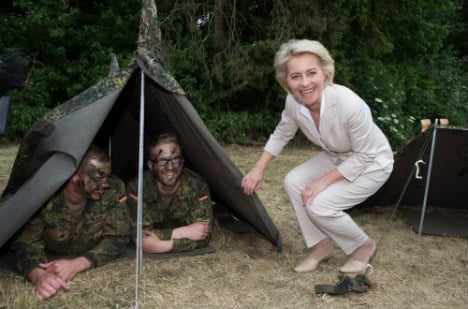On his recent visit to Hanover US President Barack Obama complained that Europe has been “complacent about its own defence,” noting that few European countries meet NATO military spending targets of two percent of gross domestic product (GDP) – leaving the US to pick up the slack.
It was far from the first time Washington had griped about a lack of commitment from its European partners, and it is unlikely to have been coincidence that he made the comments in Germany.
Ever since the end of the Cold War Berlin has cut back on military spending.
Whereas in 1990 there were 585,000 soldiers in the German army, this number has now dropped to 177,000. The military budget, meanwhile, currently stands at a little over 1 percent of GDP.
But under the ambitious Defence Minister Ursula von der Leyen of the conservative Christian Democratic Union (CDU) there have been signs of change.
2015 was the first year since the end of the Cold War that cuts to the military budget were stopped, as Russian military intervention in Ukraine and increased instability in the Middle East made the government re-evaluate military strategy.
And now von der Leyen has responded to demands from within the army to rebuild military capability with a programme of adding 14,300 soldiers to the Bundeswehr’s ranks, as well as 4.400 civilian personnel.
Tuesday’s announcement was “necessary given the current circumstances” von der Leyen said.
Around 7,000 of these positions are to be filled over the next eight years, while the military budget is also set to be increased to €39.2 billion by 2020 from a current level of €34.2 billion.
 Ursula von der Leyen. Photo: DPA
Ursula von der Leyen. Photo: DPA
Decades of cuts
Chronic under-investment in equipment has also led to a string of embarrassing revelations over recent years – among them the revelation that the army’s standard rifle, the G36, loses accuracy in high temperatures.
This is at a time when the military is taking on ever more foreign commitments.
The Bundeswehr is currently active on 16 missions, three of which have been taken on in the last six months.
According to Die Zeit, soldiers are having to rely on old equipment in dangerous fields of conflict such as on reconnaissance missions in the fight against Isis in Syrian and a conflict on northern Mali in which three French soldiers were recently killed.
Over Syria, German pilots are flying Tornado jets which are often older than they themselves are, while soldiers in other conflicts are still waiting on the Puma tank, development of which began two decades ago.
‘We need to invest’
“If we want to remain capable of acting we need to invest,” Michael Essig, a professor in military purchasing and supply-chain management at the University of the Bundeswehr in Munich, told The Local.
He added that the new investment came about because the Ministry of Defence has publicly stated in a white paper its “level of ambition’” for the military and now needs to deliver on these promises.
Nonetheless, the new commitment still keeps Germany way below its NATO commitment to invest two percent of GDP in its military. For that it would have needed to raise the budget to €60 billion instead of €39.2 billion
According to Essig the two percent target “appears to me to be, at least in the short term, unattainable.”
So will Obama’s successor still be remarking on a lack of European military commitment on his first visit to Germany? That could well be the case.
With DPA


 Please whitelist us to continue reading.
Please whitelist us to continue reading.
Member comments